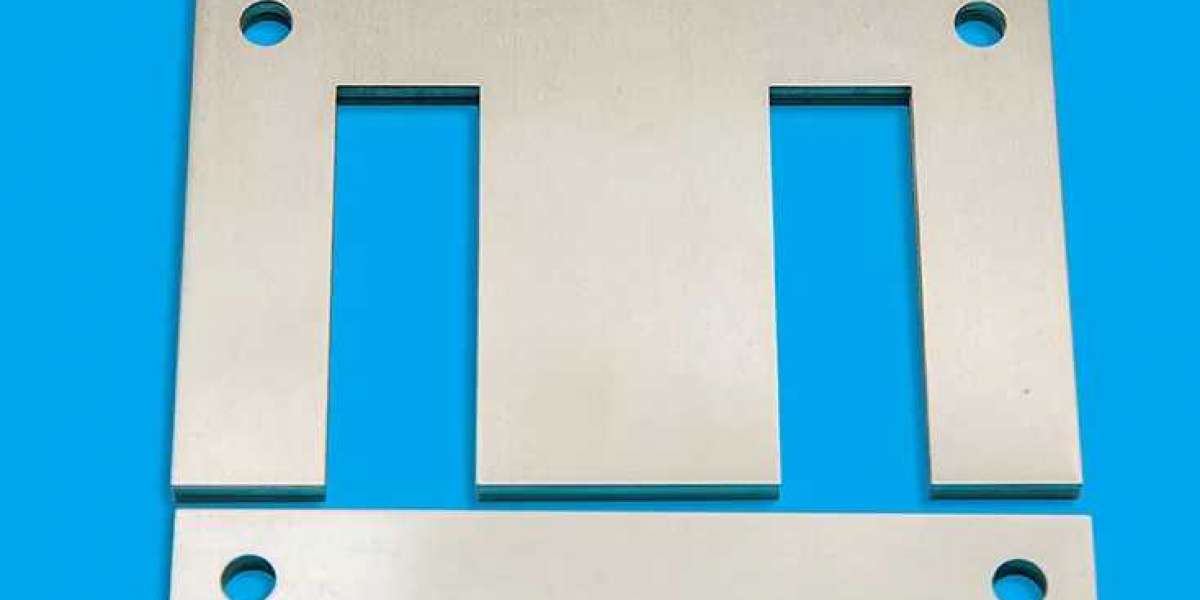1. Classification of silicon steel sheets
Silicon steel sheets can be divided into low-silicon and high-silicon according to their silicon content. Low-silicon sheet contains less than 2.8% silicon, it has certain mechanical strength, and is mainly used for manufacturing motors, commonly known as motor silicon steel sheet; high-silicon sheet contains 2.8%-4.8% silicon, it has good magnetic properties, but is relatively brittle, and is mainly used for Manufacture transformer core, commonly known as transformer silicon steel sheet. There is no strict boundary between the two in actual use, and high-silicon wafers are often used to manufacture large motors.
According to the production and processing technology, it can be divided into two types: hot rolling and cold rolling, and cold rolling can be divided into two types: grain non-oriented and grain oriented. Cold-rolled sheets have uniform thickness, good surface quality, and high magnetic properties. Therefore, with the development of industry, hot-rolled sheets tend to be replaced by cold-rolled sheets (my country has clearly requested to stop using hot-rolled silicon steel sheets, that is, " Replace heat with cold").
2. Definition of non-oriented silicon steel sheet
Non-oriented silicon steel sheet is a silicon steel sheet that forms a non-oriented deformation texture crystal structure according to a certain production process.
3. The relationship between non-oriented silicon steel sheet and oriented silicon steel sheet
Non-oriented silicon steel sheet is hot-rolled steel slab or continuous casting slab into a coil with a thickness of about 2.3MM. When manufacturing low-silicon products, the hot-rolled coils are pickled and then cold-rolled to a thickness of 0.5MM. When manufacturing high-silicon products, after the hot-rolled strip is pickled (or first normalized at 800~850*C and then pickled), it is cold-rolled to a thickness of 0.55 or 0.37MM, and annealed at 850*C in a hydrogen-nitrogen mixed atmosphere continuous furnace. , and then cold rolled to 0.50 or 0.35MM thick by 6~10% small reduction ratio. The cold rolling with a small reduction rate can make the grain grow and reduce the iron loss during annealing. Both cold-rolled sheets are final annealed in a continuous furnace at 850°CZ in a 20% hydrogen-nitrogen mixed atmosphere, and then coated with a phosphate plus chromate insulating film. After cold rolling to the thickness of the finished product, the supply state is mostly steel strips with a thickness of 0.35MM and 0.5MM. The BS of cold-rolled non-oriented silicon steel is higher than that of grain-oriented silicon steel.
Grain-oriented silicon steel sheets require low oxide inclusion content in steel and must contain C0.03~0.05% and inhibitors (second phase dispersed particles or grain boundary segregation elements). The role of the inhibitor is to prevent the growth of primary recrystallization grains and promote the development of secondary recrystallization, so as to obtain a high (110) [001] orientation. The inhibitor itself is harmful to the magnetism, so after the inhibition is completed, it must be purified and annealed at high temperature. When the second phase inhibitor is used, the heating temperature of the slab must be increased to make the original coarse second phase particles into solid solution, and then be precipitated as fine particles during hot rolling or normalization, so as to enhance the inhibitory effect. The thickness of cold-rolled finished product is 0.28, 0.30 or 0.35MM. Cold-rolled oriented thin silicon steel strip is made of 0.30 or 0.35MM thick oriented silicon steel strip, which is then pickled, cold-rolled and annealed. Compared with cold-rolled non-oriented silicon steel, oriented silicon steel has much lower loss than non-oriented silicon steel, and its magnetism has strong directionality; it has superior high magnetic permeability and low loss characteristics in the easily magnetized rolling direction. The iron loss of the grain-oriented steel strip in the rolling direction is only 1/3 of that in the transverse direction, and the ratio of magnetic permeability is 6: 1. Its iron loss is about 1/2 of that of hot-rolled strip, and its magnetic permeability is 2.5 times that of the latter. .
4. Performance and usage
Due to the different performance characteristics of the two, there are differences in the direction of use. The main purpose of cold-rolled non-oriented silicon steel sheet is for the manufacture of generators, so it is also called cold-rolled electrical silicon steel. The main purpose of cold-rolled oriented silicon steel strip is for transformer manufacturing, so it is also called cold-rolled transformer silicon steel.


